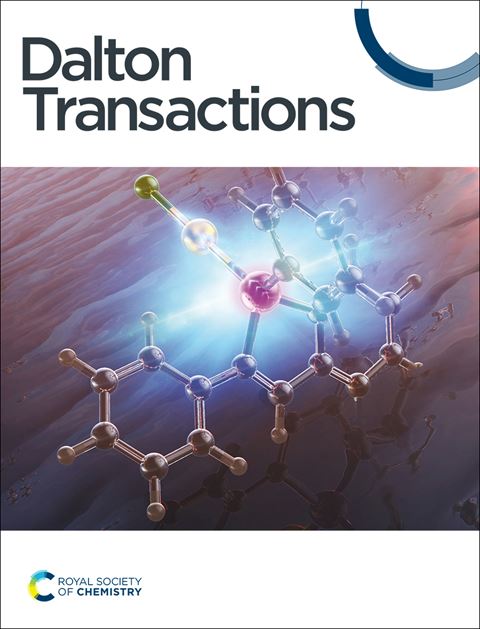Modulating the Catalytic Properties of Decavanadate Hybrids Using a Mixed Counterion Strategy for Selective Oxidation of Thiophene-based Sulfides and Detoxification of Mustard Gas Simulant
IF 3.5
3区 化学
Q2 CHEMISTRY, INORGANIC & NUCLEAR
引用次数: 0
Abstract
Selective oxidation of sulfides to sulfoxides, especially thiophene-based sulfides, is a challenging task. Herein, we report a mixed counterion strategy to tune the selectivity of sulfoxidation reaction catalyzed by decavanadate cluster-based hybrids using H2O2 as the oxidant under ambient conditions. By employing two different aryl sulfonium counterions (ASCIs) bearing different organic functional groups (phenol/aldehyde/salicylaldehyde/2,6-diformyl phenol) in a 1:1 synthetic feed ratio, we have generated a series of decavanadate cluster-based hybrids HY1-HY6. Different functional groups on the periphery of hybrids HY1-HY6 helped control the efficiency and selectivity of the sulfoxidation reaction by fine-tuning the electronic and supramolecular effects of these hybrids as catalysts. Further, these hybrids were also applied as catalysts for detoxifying 2-chloroethyl ethyl sulfide (CEES), a mustard gas simulant. The hybrid HY5, with a structural formula (DFHPDS)2(FPDS)2[H2V10O28](H2O)3(DFHPDS = (3,5-diformyl-4-hydroxyphenyl)dimethylsulfonium, and FPDS = (4-formylphenyl)dimethylsulfonium) showed the best catalytic properties in the series, with up to 99 % conversion and 85 % and 99 % selectivity towards sulfoxide in the case of dibenzothiophene (DBT) and CEES, respectively. This study's findings open new avenues for tuning the catalytic properties of POM-based hybrids toward selective organic transformation reactions by using a mixed counterion strategy.求助全文
约1分钟内获得全文
求助全文
来源期刊

Dalton Transactions
化学-无机化学与核化学
CiteScore
6.60
自引率
7.50%
发文量
1832
审稿时长
1.5 months
期刊介绍:
Dalton Transactions is a journal for all areas of inorganic chemistry, which encompasses the organometallic, bioinorganic and materials chemistry of the elements, with applications including synthesis, catalysis, energy conversion/storage, electrical devices and medicine. Dalton Transactions welcomes high-quality, original submissions in all of these areas and more, where the advancement of knowledge in inorganic chemistry is significant.
 求助内容:
求助内容: 应助结果提醒方式:
应助结果提醒方式:


